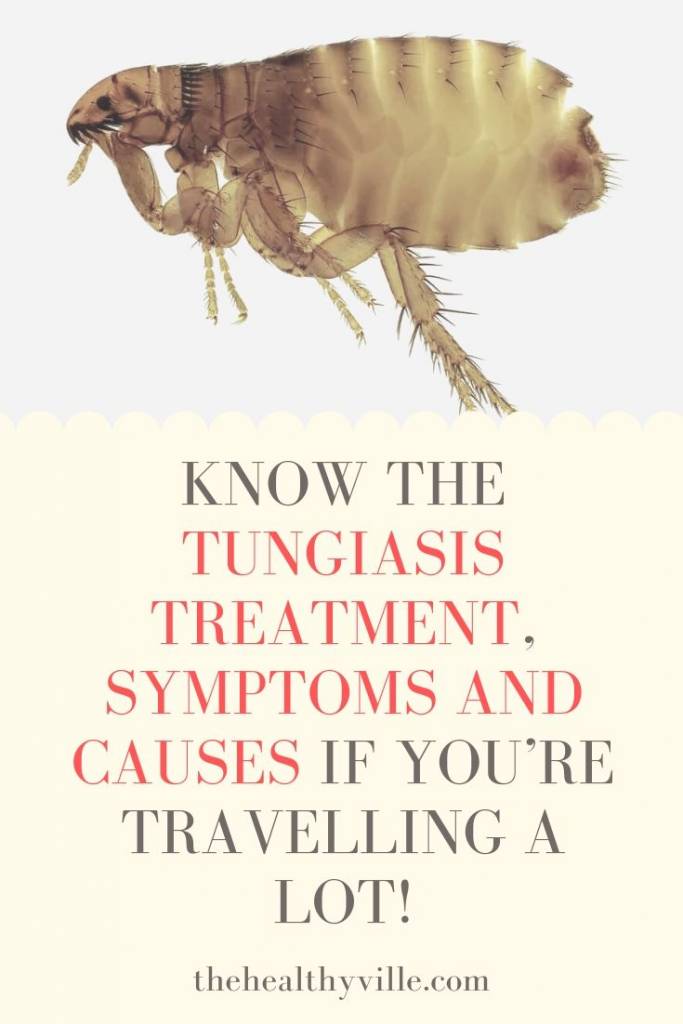Know the tungiasis treatment options and see how you can get this disease, and whether you can get complications.
Tungiasis is a disease closely related to poverty, since it mainly affects those who walk barefoot and live in unpaved areas with poor garbage collection.
Tungiasis is a parasitic disease closely related to poverty. Hematophagous fleas causes it, that is, they feed on blood. In particular by the Tunga penetrans species, although cases associated with the Tunga trimamillata have also been reported.
This insect has colloquial names such as nigua, chique, chica, chigoe, etc. The first reports on tungiasis appeared in 1525, when the Spanish conqueror Fernando González de Oviedo observed that many natives of Haiti suffered from this strange evil.
The parasite is native to America and from there it has spread to other areas of the world. Currently, the endemic areas of this flea are Latin America, the Caribbean, sub-Saharan Africa, Madagascar, Zanzibar, Seychelles, the west coast of India, Pakistan and Oceania.
What is tungiasis?
Tungiasis occurs when a flea of the mentioned species penetrates the skin of a warm-blooded organism. The disease develops if the female of the species, in a gravid state, penetrates the skin. When this happens, it undergoes a hypertrophy process and generates thousands of eggs that it then expels.
The disease can affect any body area, but it is more common to affect the feet. This is because the flea prefer a habitat which is dry, dark, sandy and rich in organic material. Add to this the fact that many people walk without shoes, which makes the attack possible.
The flea crosses the epidermis, until it manages to feed on the capillaries of the papillary dermis. The anal-genital opening of the parasite communicates with the surface of the skin. Over there the eggs get outside and after 1 to 3 weeks, the female dies.
Symptoms of tungiasis
After infection, an intense itchy rash will occur, as a consequence of the inflammatory reaction to the flea.
Read more: Reasons For Allergic Reaction On Skin That Cause Rashes On Your Buttocks, Arms And Legs!
In most cases, tungiasis affects the soles of the feet, periungual regions and interdigital folds. It is estimated that only between 5% and 10% of cases correspond to affectations in other areas of the body.
Intense pruritus is usually experienced in the affected region. The lesions can be single or multiple. Also painful or asymptomatic. In the 24 hours after the penetration of the parasite, an erythematous papule or macula appears. It usually begins to appear two hours after the attack.
The lesion evolves and results in whitish nodules, which have a black dot in the center. Said black spot is the back abdomen of the flea. Many times, near the lesion, a cluster of eggs attached to the skin is observed.
Once the flea dies, the lesion is covered by a black scab. This is due to blood coagulation and debris. Then an epidermal scar appears. Sometimes the lesions are similar to a blister, with an ulcerated and warty appearance.
Tungiasis treatment
The basic tungiasis treatment is to perform a surgical flea extraction. For this, you need to use a sterile needle and then wash it with a saline solution. In some cases, you need to do the deep shaving method. Then apply a curettage with electrocoagulation.
It is very important that doctors extract the parasite with the greatest care. In case the flea’s body breaks during the process, what follows is a severe inflammatory condition. After removal it is convenient to apply topical antibiotics.
In some cases, doctors use thiabendazole to treat tungiasis. It is an oral medication that goes in doses of 25 mg / kg per day, for a period of 5 to 10 days. Doctors use the same medicine, in ointment and lotion, to reduce the number of injuries.
Prevention
Health and health education are measures you need in endemic areas of tungiasis.
The best way to avoid tungiasis is to prevent its appearance. For this, the most practical measure is the use of closed footwear and avoid lying down or sitting in places where the flea could inhabit.
The best strategy, in any case, is the fight against poverty, paving roads and establishing effective garbage collection systems. Likewise, contribute to the improvement of homes that, especially, should not have dirt floors.
In the same way, education plays a fundamental role. It is necessary to train people who have the exposure to the action of this parasite so that they know and prevent its penetration.
Don’t forget to SHARE the tungiasis treatment, symptoms and causes with your friends and family!

